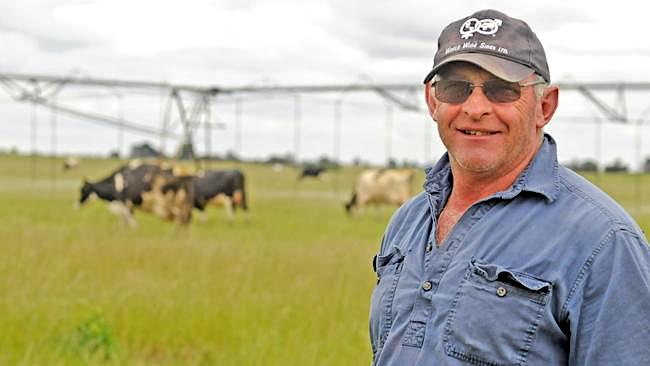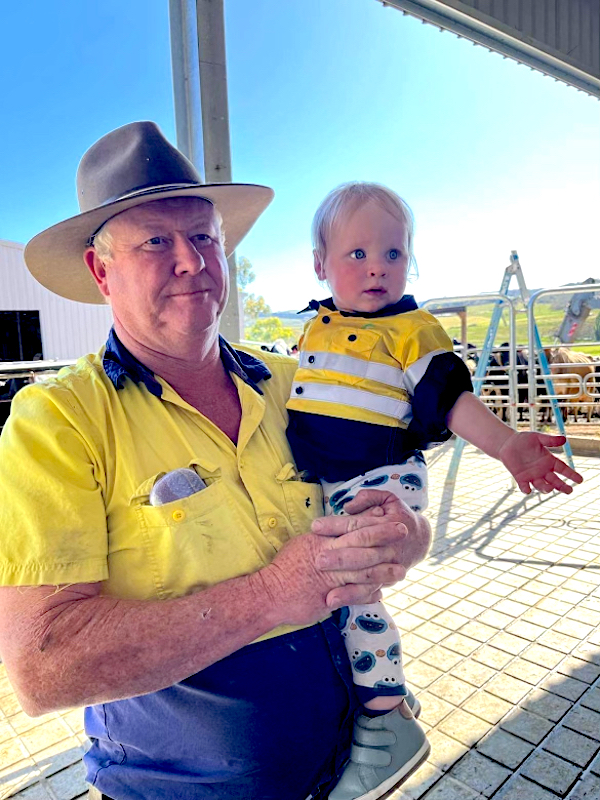Keeping antibiotic residues out of Australia’s milk supply chain is essential to protect public health, ensure food safety, comply with regulations, maintain trade relationships, and uphold animal welfare standards.
“The risks of mismanaging antibiotic use are clear to see, with the potential to negatively impact trade, reputation, public health and animal welfare,” said Geoff Raven, CEO of Dairysafe.
“Management of antibiotics is a shared responsibility across the supply chain between animal health experts, dairy farmers and processors. It’s important to get your antibiotic protocols in place as breaches in managing antibiotic residues can result in significant costs and damage to a business’s reputation.”
Australia’s dairy industry employs a multifaceted approach to manage the risk of antibiotics entering the supply chain. This approach is outlined in the national policy, emphasising collaboration between dairy farmers and processors. The policy outlines the management and minimum monitoring arrangements for managing antibiotics in the dairy sector, and is endorsed by dairy food safety regulators in State and Commonwealth jurisdictions, and dairy industry stakeholders.
“Implementing robust systems and protocols, adhering strictly to label instructions, following withholding periods, and accurately identifying treated stock are vital components of this strategy,” Geoff said.
“Ensuring staff comprehension and adherence to these protocols is paramount, with key risks including the proficiency of personnel, especially temporary or new staff, and their training on the established systems.
“We encourage our producers to maintain strong relationships with their local vets to ensure treatments administered are fit for purpose, and that treatment amount, frequency and withhold periods are appropriate.”
Through stringent regulations, comprehensive monitoring programs, and industry-wide cooperation, the dairy sector maintains the integrity of its products while safeguarding consumer health. The Australian Milk Residue Analysis (AMRA) survey continues to produce high compliance rates, with nearly 100% adherence across all chemical classes over several years across the dairy supply chain.
Andrew Cavill
Bool Lagoon farmer Andrew Cavill, who milks 700 cows in his 60-unit rotary, was prompted to review his protocols when antibiotic residue was detected in raw milk earlier this year.
The failure occurred when a test bucket overflowed into the milking line, which contaminated the tank of milk.
The residue was picked up through routine monitoring and managed in line with Australia’s Antibiotic Management and Monitoring Policy.
“One of our milkers took the test bucket off the cow and realised it was full, but that didn’t trigger her to think, ‘If it’s full, it probably overflowed,’ so the milk went through the line to our processor,” Andrew said.

“The first we knew about it was when our processor told us, after testing the milk, that it had come up positive for AB residue. We had to pay the dumping cost and the transport cost of that milk, which was about $8,000. And there were 18,000 litres that we never got paid for, which was another $15,000. It was an expensive little exercise.
“It was disappointing, and it was the first failure I’ve had in 45 years. But on the positive side, it made me look at my systems to ensure a failure doesn’t happen again. Our milk processor came out, and I went through all our standard operating procedures. It was a good exercise, even if it was prompted by a bad situation.”
Andrew’s protocols include a computer system in the dairy that won’t allow an antibiotic-positive cow to be milked and painting of udders for visual cues.
“And the most important thing is your record keeping. The system is only as good as your data entry – if you don’t enter data into the computer, you’re going to have a failure,” he said.
When we treat any cow, it’s entered into the computer, and every treatment thereafter is entered into the computer. For us, it’s about constantly going over the processes with staff – training, training, training.”
Red paint is used on the udder of cows if they have been treated with antibiotics or if they are a milk withhold cow. “Red means stop, don’t milk it, draft her out, and we’ll deal with her at the end,” Andrew said.
“Green means go, so any cow with green paint is good to milk. When the red paint is greened out, that cow can be milked – the system is updated, and the computer will let you milk her again.
“And the computer won’t allow you to put the milking cups on red cows unless you override it manually, which no one does. We’re constantly going over our standard operating procedures with our milking staff so that everybody is aware, to avoid any issues in the future.”
Michael Connor
For Fleurieu Peninsula farmer Michael Connor, having the right protocols in place is key to responsible antibiotic use and preventing detections in milk at Nangkita Dairies.
Michael runs two robotic dairies, one at Mount Jagged that milks 350 cows through six Lely robots and another at Nangkita milking 450 cows through eight Lely robots.
“We’ve always been focused on responsible use of antibiotics, with clearly defined protocols and that hasn’t changed with the introduction of robots,” Michael said.
“I’ve been aware of the risk of resistance in animals from overuse of antibiotics all my life, so that’s why we don’t feed our calves any antibiotic milk and focus on herd health prevention and targeted treatments so that we don’t have to use a significant amount of antibiotics.”
Nangkita Dairies’ animal health protocols were designed with help from vets to ensure that the correct drug and dose rate is used to achieve the best clinical outcomes. “It really is about having good systems and protocols in place, and ensuring your staff understand them and follow them consistently,” he said.

“We had a false positive a couple of years ago, which shook our system up a bit. An antibiotic showed up in a milk sample and we couldn’t track down how that occurred. It ended up being a false positive, but it made us revamp all our protocols so that we can trace back if something like that does happen again.
“Being a reliable supplier of high-quality milk is a priority for our business and requires good, transparent food safety systems including antibiotic protocols. Your business is judged by how you manage these sorts of things.”
Michael said the introduction of milking robots had minimised cow stress and assisted with animal health through early detection which in turn has reduced antibiotic use.
“We’ve had a step up with robots in terms of data collection including somatic cell count at every milking. They also eliminate the transfer of mastitis between cows with the flushing of cups between cows and monitoring of conductivity in quarters,” he said.
“Even before robots, we have always done things like using a lot of vaccines, drenches, in-feed minerals and selective dry cow to try to minimise the need for antibiotics.”
Key issues for industry
Public Health Concerns: The presence of antibiotic residues in milk poses significant health risks to consumers. Consumption of milk containing these residues can lead to the development of antibiotic-resistant bacteria in humans, reducing the effectiveness of antibiotics in treating infections and potentially increasing morbidity and mortality rates.
Antibiotic Resistance: Antibiotic resistance is a global public health threat exacerbated by the overuse or misuse of antibiotics in livestock. Resistant bacteria can spread to humans through contaminated food products such as milk. By preventing antibiotic residues in milk, the risk of antibiotic resistance is mitigated.
Food Safety Standards: Australia, like many other nations, maintains strict regulations to ensure food safety. Antibiotic residues in milk can breach these regulations, resulting in legal consequences for producers. Adherence to food safety standards is essential to preserve consumer trust and uphold the integrity of the dairy industry.
Trade Considerations: International trade of dairy products is subject to regulations and standards pertaining to food safety. The presence of antibiotic residues in milk could lead to trade barriers or restrictions, affecting the export market for Australian dairy products. Compliance with international food safety standards is crucial to maintain access to global markets.
Animal Welfare: Responsible management of antibiotics in livestock is essential to safeguard animal welfare. Overuse of antibiotics can contribute to the development of antibiotic-resistant bacteria in animals, compromising their health and welfare.